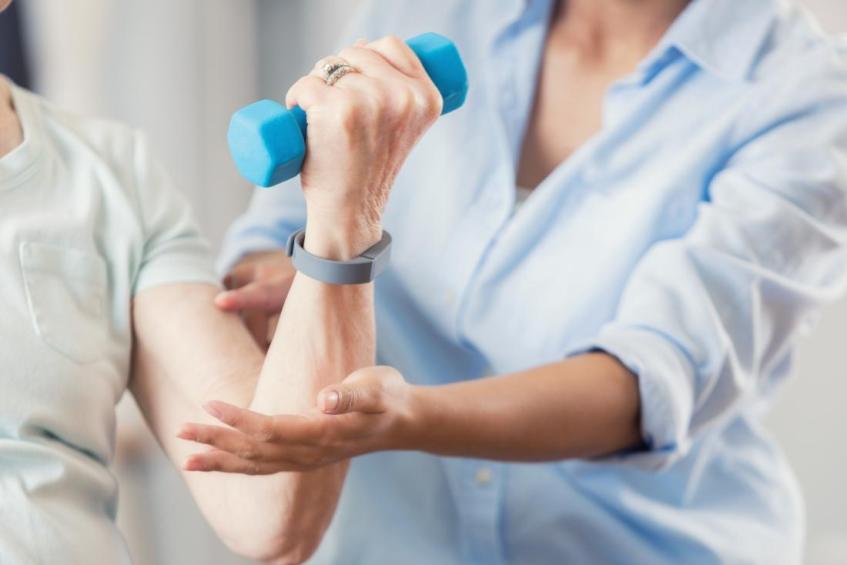I want to begin by pointing out that I am not a doctor of any kind. However, I ran a bike shop for years and helped people get comfortable on their bikes. See a doctor and/or get a proper bike fitting if you have serious riding pain or similar issues. This is another in a series of beginner riding tips.
You would think the simple answer would be to stop riding with locked joints and that would be the end of the lesson. It’s not.
When riding, you have a lot of joints that are static, i.e. they not moving. For example, think about what your shoulders and elbows are doing when you ride. They are working, but not bending or flexing through much of their possible range of motion. The overarching rule for joints like these is that you want to keep these joints partially bent and able to move in two directions. Imagine trying to keep your entire body like a partially compressed spring, able to absorb compression or extend when needed. Specifically:
- Position your wrists so your palms are angled just a little above your forearm, not locked upward.
- Bend your elbows out a little, just enough to unlock them. Don’t lock them inward.
- Keep your shoulders down and relaxed, not shrugged.
- Don’t lock your back and neck or “arch” or “hunch” them to the limit of their movement. The back and neck are a bigger topic that I will cover in more detail in another article.


The reason we lock these joints is that it allows the bones and ligaments to support our body weight, not our muscles, so we don’t get as tired. But if locked joints sound bad, that’s because they are. Really bad. If your joint is flexed to one end of its range and you hit a bump or something causes unexpected movement, it can force the joint to be flexed beyond its limit. Locked joints can pinch nerves, inflame joints, cause numbness, and irritate arthritis. But these symptoms don’t surface until the long run, so they are not always associated with riding posture. People will ride with their wrists and elbows locked and ask why they have numbness in their hands sometimes. It is not always natural to link the two together. On the other hand, riders feel immediate muscle relief when they lock their joints, so there is a clear relationship between the two.
So you would think the simple answer would be to stop riding with locked joints and that would be the end of the lesson. Unfortunately, riders often experience pain when they start riding with properly flexed joints. This is because they are using muscles for support instead of locked joints. Supporting your weight using these joints in this way is pretty specific to cycling. You don’t do it when you walk, sit, run, swim, etc. So those muscles may not be in very good shape for this kind of activity, and the pain riders experience is most often due to sore muscles, not nerve issues as riders often think.


Further complicating matters is the fact that cycling does not exercise those muscles very well because they don’t move much while riding. This kind of muscle activity is called isometric. Isometrics are very good, but usually in combination with other exercises that move the muscles too. Imagine trying to get strong biceps without actually moving your arms. So simply riding more is not always the answer.
It is a good idea to do some kind of exercise for these joints in ways that involve a range of motion. Such exercises are called cross-training since the goal is primarily to support another activity. And don’t confuse it with CrossFit, which is a bunch of crazed gym rats turning exercise into a competition. Core exercises are commonly mentioned as good cross-training for cyclists, and they are. But so are exercises specific to your neck, shoulders, etc. The details of those exercises are beyond the scope of this article, so going to the web, your doctor, the gym, or a bike shop may be necessary. Don’t wait until you are in pain before you do some cross-training. Get in front of the issue and make it part of your regular routine as you ride more.
